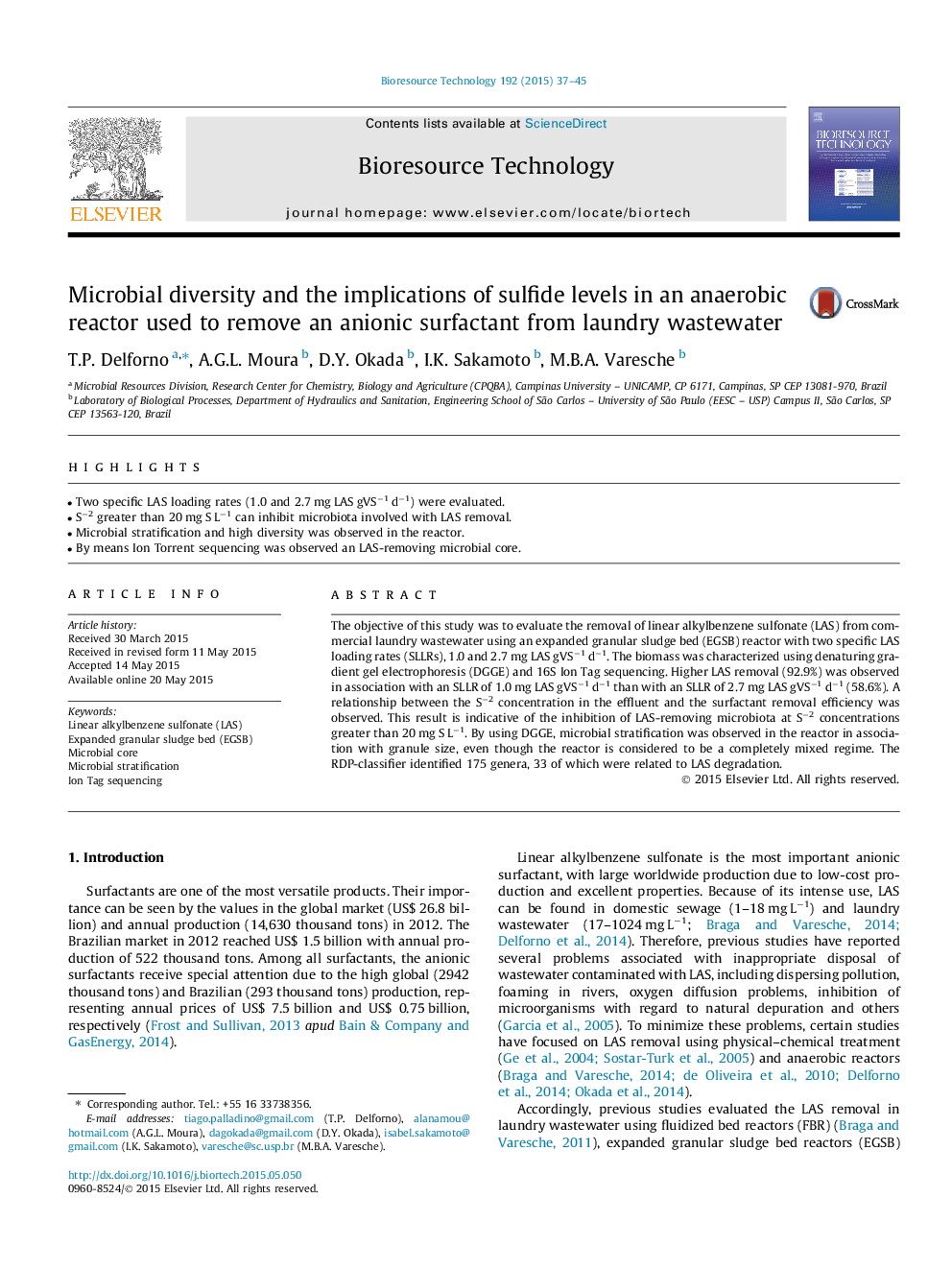| Article ID | Journal | Published Year | Pages | File Type |
|---|---|---|---|---|
| 7074116 | Bioresource Technology | 2015 | 9 Pages |
Abstract
The objective of this study was to evaluate the removal of linear alkylbenzene sulfonate (LAS) from commercial laundry wastewater using an expanded granular sludge bed (EGSB) reactor with two specific LAS loading rates (SLLRs), 1.0 and 2.7 mg LAS gVSâ1 dâ1. The biomass was characterized using denaturing gradient gel electrophoresis (DGGE) and 16S Ion Tag sequencing. Higher LAS removal (92.9%) was observed in association with an SLLR of 1.0 mg LAS gVSâ1 dâ1 than with an SLLR of 2.7 mg LAS gVSâ1 dâ1 (58.6%). A relationship between the Sâ2 concentration in the effluent and the surfactant removal efficiency was observed. This result is indicative of the inhibition of LAS-removing microbiota at Sâ2 concentrations greater than 20 mg S Lâ1. By using DGGE, microbial stratification was observed in the reactor in association with granule size, even though the reactor is considered to be a completely mixed regime. The RDP-classifier identified 175 genera, 33 of which were related to LAS degradation.
Related Topics
Physical Sciences and Engineering
Chemical Engineering
Process Chemistry and Technology
Authors
T.P. Delforno, A.G.L. Moura, D.Y. Okada, I.K. Sakamoto, M.B.A. Varesche,
